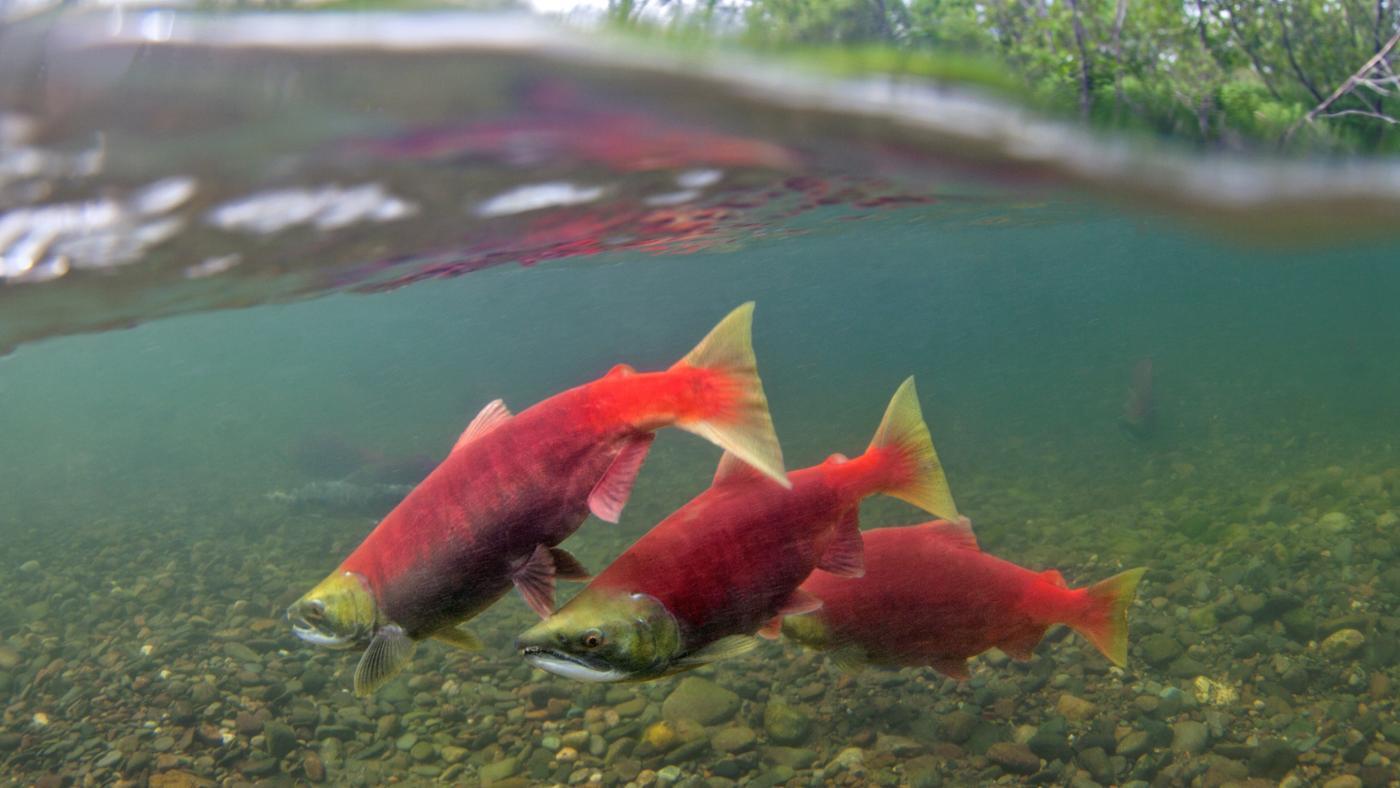Salmon are truly remarkable fish that undergo an incredible and complex lifecycle as they mature from eggs to adult spawners But what exactly are the different stages that a salmon goes through as it grows up? In this article, we’ll explore the fascinating developmental journey of salmon and reveal the specific names used to describe juvenile salmon at each stage
When salmon eggs hatch, the newly emerged fish are known as alevin. At this initial stage, alevins are tiny, around 0.6 to 0.8 inches long. Their large yolk sac is still attached, providing essential nutrients as they continue developing.
Alevins remain sheltered in the gravel beds of their freshwater streams, living off their yolk sacs. After around 2-6 weeks, the yolk has been fully absorbed and alevins must start foraging for food. Now free-swimming, these young salmon are called fry.
During the fry stage, juvenile salmon feed on zooplankton and small aquatic invertebrates. They grow rapidly, reaching 1 to 2 inches in length Fry hide among gravel and rocks, darting out to feed while avoiding predators Their camouflage markings, called parr marks, start to become visible.
When a salmon fry reaches around 2 inches long, after several months of growth, it advances to the parr stage. The parr marks are now fully formed, consisting of dark vertical bars on both sides which help parr blend into their environment. These marks also led to the old name of “samlet” for parr.
Parrs feed mostly on insect larvae and other small river organisms. They establish feeding territories which they aggressively defend from intruders. Parrs continue growing, reaching 2 to 5 inches long by the end of this 1 to 2 year stage.
Next comes the period of incredible transformation known as smoltification, when parr transition into the smolt stage. This involves complex physiological and biochemical changes preparing them for migration to the ocean.
One dramatic change is the loss of parr marks and development of a streamlined, silvery appearance which camouflages them in saltwater. Other adaptations include increased salinity tolerance and alterations in metabolism and homeostasis. At this stage, around 2 years of age, the salmon are called smolts.
Ranging from 4 to 10 inches long now, smolts migrate downstream toward the ocean. This perilous journey exposes them to many hazards, including predators, polluted waters, dams and fisheries. Smolts that survive eventually reach the sea and begin a stage of rapid growth.
Several years in the ocean transforms the smolts into mighty adult salmon ready to return to their birth streams to spawn. Their age at maturity varies between species, generally from 2 to 6 years. The iconic journey these determined fish embark on to reach their spawning grounds remains one of nature’s greatest miracles.
Understanding the salmon’s developmental stages provides insight into their biology and ecology. We can better support conservation efforts by protecting salmon during each vulnerable phase, from tiny alevins to migrating smolts. The resilience of these remarkable fish is inspiring. Learning their life history gives us hope that wild salmon runs will continue sustaining our waters and forests for generations to come.

Best answers for Young salmon: advertisement advertisement
| Rank | Length | Word | Clue |
|---|---|---|---|
| 98% | 5 | SMOLT | Young salmon |
| 98% | 4 | PARR | Young salmon |
| 98% | 6 | GRILSE | Young salmon |
| 98% | 6 | SMOLTS | Young salmon |
| 98% | 5 | PARRS | Young salmon |
| 98% | 3 | FRY | Young salmon |
| 98% | 6 | SAMLET | Young salmon |
| 98% | 7 | SAMLETS | Young salmon |
| 98% | 6 | ALEVIN | Young salmon. |
| 98% | 7 | GRILSES | Young salmon. |
| 98% | 7 | SKEGGER | Young salmon. |
The Fascinating 5 Stages of a Salmon’s Life #wildlife #naturelovers
FAQ
What is another name for young salmon?
All young salmon, trout and their close relatives have regularly spaced dark marks on their sides. That is why we call them parr. Parr are also often called fingerlings.
What is a young salmon called?
The eggs remain in the gravel throughout the winter before hatching in the spring. Newly hatched salmon, called sac fry or alevins, obtain food from their attached yolk sac and may remain buried for some time.
What is a juvenile salmon called?
After 2 to 6 months the eggs hatch into tiny salmon larvae called sac fry or alevin. These hatchlings have a yolk sac containing the remainder of the yolk and they stay hidden in the gravels for a few more days, as they are still largely immobile and rely on the remaining nutrients stored in the sac for survival.
What is a little salmon called?
Coho salmon in ocean phase and spawning phase
The Coho salmon or silver salmon as this species is also called is a small salmon compared to the other species.
